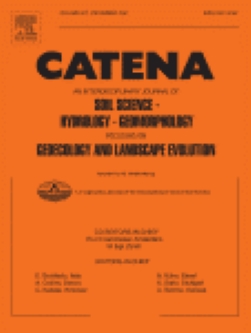
Catena. Volumen 207, 105689.
Autores/as: Turu V., Carrasco R.M., López-Sáez J.A.,, Pontevedra-Pombal X., Pedraza J., Luelmo-Lautenschlaeger R., Pérez-Díaz S., Echeverria-Moreno A., Frigola J., Alba-Sánchez F., Pélachs-Mañosa A., Cunill-Artigas R., Nadal-Tersa J., Mur-Cacuho E., Soriano-López JM.
The Iberian Central System (ICS) is a clue region to reveal Mediterranean/Atlantic inferences over Iberia. We present a multidisciplinary study from western Spain conducted in the Navamuño depression (ND), covering the last 16.8 ka (cal BP). A reconstruction of the palaeotemperature from the resulting geochemical data highlights four cold and dry intervals, namely, the Oldest Dryas, Older Dryas, Intra-Allerød Cold Period (IACP), and the Younger Dryas, along with warmer intervals: the Bølling (14.7–14 ka) and the Allerød (12.9–12.6 ka); however, the Greenland Interstadial GI-1c (13.4–13.1 ka) is barely distinguishable in the ND. Despite the shortage of biomass to sustain fire, the earliest charcoals are from ~14.4–13.8 ka. Evidence of ash/dust events overprinting the geochemical background starts at ~13.8–12.8 ka. Significant fire activity in the Early Holocene at ~11.7–10.6 ka affected the ND, matching the westernmost ICS data. This period includes short oceanic spells inferred from Cl peaks at ~10.9–10.2 ka and three cold intervals at 11.4, 9.3, and 8.2 ka disrupted the progressive temperature increase. The Mid-Holocene showed a continuously increasing trend towards an arid climate, peaking at 4.2 ka under a pervasive dust influx from North Africa, which has prevailed since almost ~7.9 ka. A prominent volcanic event at ~6.8–5.8 ka is in Navamuño and Roñanzas (Asturias, N Spain; Gallego et al., 2013) identified from heavy metal-rich layer, synchronous with the last known eruption of the Calatrava volcanic field (South-Central Spain; Poblete-Piedrabuena et al., 2019). This volcanic eruption could affect many other regions half north of Iberia. The pervasive presence of oceanic aerosols in the last three millennia (2.8 ka ~ ) allowed the formation of a Cl-rich peat layer during the Ibero-Roman humid period ~2.1 ka, before a changing around ~0.4 ka toward colder and drier conditions at the Little Ice Age (LIA) period.

Investigación
Transferencia


